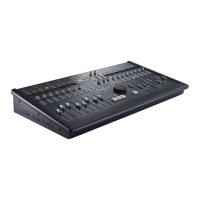Nucleus
2
User Guide Page 25
5. Nucleus
2
Remote
The Nucleus
2
Remote performs an essential role in defining how Nucleus
2
functions, from the control protocol being used
to the functions assigned to many of the Nucleus
2
switches. The Remote can be run from any computer that has access
to Nucleus
2
over Ethernet.
ESTABLISHING THE REMOTE CONNECTION
In the bottom left-hand corner of the Remote window there is a Find ( ) button, along with an indication regarding the
current status of the connection to Nucleus
2
.
When the Nucleus
2
Remote first opens, it searches for a Nucleus
2
console to control. If it finds one, it will automatically
link to that console and a Nucleus
2
SN nnnn is online message will appear (in green) in the Status field, where ‘SN nnnn’
is the ID of the selected Nucleus
2
console .
If this is the first time that you have run the Nucleus
2
Remote, and it is unable to locate a Nucleus
2
unit, the current status
will be shown (in red) as No Nucleus
2
Selected – Click on Find. Alternatively, if the Remote has previously been used but
it cannot find the Nucleus
2
console it expected to locate, the current status will instead display the message Nucleus
2
SN
nnnn is offline where ‘SN nnnn’ is the ID of the Nucleus
2
console expected.
If this happens, first check your connections and then click on the button to bring up the Find pop-up. Clicking the
Find button in the top right of the pop-up will cause the Remote to then scan for consoles. The Choose A Network Interface
Controller dropdown menu is used to focus the search when connected to different networks. In a standalone, single
console setup, select the Default option.
Once the Remote has found the console, it will appear in the pop-
up. Check the Select box for the correct console and click on the
Close button.
Once a connection has been made to a Nucleus
2
, a Nucleus SN
nnnn is online message will appear in the Status field, where ‘SN
nnnn’ is the ID of the Nucleus
2
console selected.
Find
button

